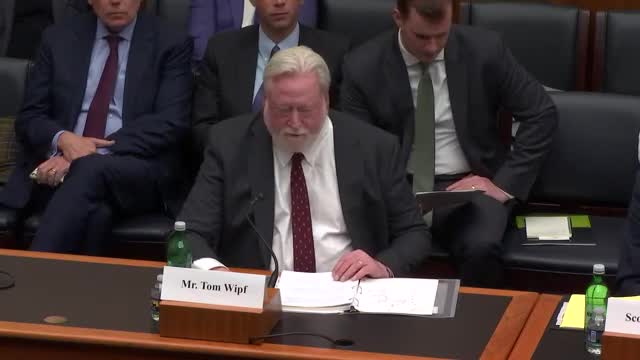SIFMA urges reforms to facilitate US Treasury market central clearing success
April 09, 2025 | Financial Services: House Committee, Standing Committees - House & Senate, Congressional Hearings Compilation
This article was created by AI summarizing key points discussed. AI makes mistakes, so for full details and context, please refer to the video of the full meeting. Please report any errors so we can fix them. Report an error »

In a pivotal meeting held by the U.S. House Committee on Financial Services, experts gathered to discuss the future of the U.S. Treasury market, a cornerstone of the global financial system. The atmosphere was charged with urgency as representatives outlined the critical need for reforms to ensure the market's continued efficiency and resilience.
The U.S. Treasury market, recognized as the largest and most liquid bond market worldwide, plays a vital role in determining borrowing costs for consumers, businesses, and governments. With a staggering $28 trillion in Treasury securities currently outstanding—more than double the amount from 2016—its smooth operation is essential for minimizing costs to taxpayers and maintaining the integrity of the financial system.
However, the meeting revealed growing concerns about the constraints facing primary dealers and banks, which are crucial for market intermediation. Regulatory requirements, such as the supplementary leverage ratio (SLR) and Basel III proposals, have been identified as potential barriers that could limit the capacity of these institutions to effectively manage Treasury transactions. Experts emphasized that these regulations, while intended to mitigate risk, could inadvertently stifle liquidity and market-making capabilities.
One significant development discussed was the SEC's recent rule mandating the central clearing of Treasury securities and repo transactions. This move aims to enhance market stability but requires careful implementation to avoid disruptions. The extension of the implementation date by SEC Acting Chairman Ueda was welcomed as a necessary step to facilitate a smooth transition.
Participants also highlighted the need for adjustments to the SLR and other capital requirements to ensure that banks can adequately support Treasury market operations, especially during periods of financial stress. The proposed changes aim to align regulatory frameworks with the actual risks associated with client portfolios, thereby promoting a healthier environment for Treasury trading.
As the meeting concluded, there was a shared commitment among stakeholders to collaborate on refining the regulatory landscape. The overarching goal remains clear: to preserve the U.S. Treasury market's status as a linchpin of global finance while adapting to the evolving demands of the market. The discussions underscored a collective understanding that any reforms must enhance liquidity and resilience, ensuring that the market can meet the growing demand for Treasury securities in the years to come.
The U.S. Treasury market, recognized as the largest and most liquid bond market worldwide, plays a vital role in determining borrowing costs for consumers, businesses, and governments. With a staggering $28 trillion in Treasury securities currently outstanding—more than double the amount from 2016—its smooth operation is essential for minimizing costs to taxpayers and maintaining the integrity of the financial system.
However, the meeting revealed growing concerns about the constraints facing primary dealers and banks, which are crucial for market intermediation. Regulatory requirements, such as the supplementary leverage ratio (SLR) and Basel III proposals, have been identified as potential barriers that could limit the capacity of these institutions to effectively manage Treasury transactions. Experts emphasized that these regulations, while intended to mitigate risk, could inadvertently stifle liquidity and market-making capabilities.
One significant development discussed was the SEC's recent rule mandating the central clearing of Treasury securities and repo transactions. This move aims to enhance market stability but requires careful implementation to avoid disruptions. The extension of the implementation date by SEC Acting Chairman Ueda was welcomed as a necessary step to facilitate a smooth transition.
Participants also highlighted the need for adjustments to the SLR and other capital requirements to ensure that banks can adequately support Treasury market operations, especially during periods of financial stress. The proposed changes aim to align regulatory frameworks with the actual risks associated with client portfolios, thereby promoting a healthier environment for Treasury trading.
As the meeting concluded, there was a shared commitment among stakeholders to collaborate on refining the regulatory landscape. The overarching goal remains clear: to preserve the U.S. Treasury market's status as a linchpin of global finance while adapting to the evolving demands of the market. The discussions underscored a collective understanding that any reforms must enhance liquidity and resilience, ensuring that the market can meet the growing demand for Treasury securities in the years to come.
View full meeting
This article is based on a recent meeting—watch the full video and explore the complete transcript for deeper insights into the discussion.
View full meeting